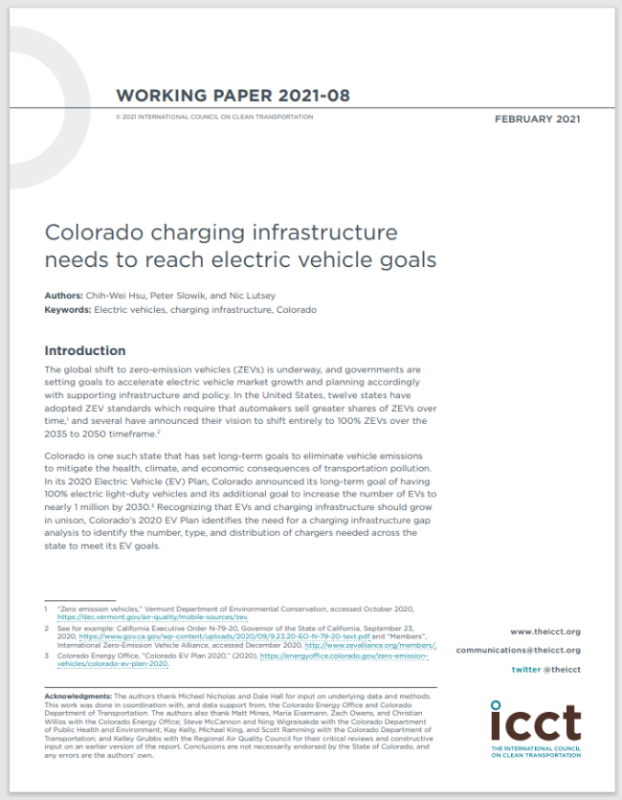This study analyzes the number, type, and distribution of EV chargers needed to meet Colorado’s 2030 electric vehicle sales goals. It quantifies the public, workplace, and home charger needs for passenger vehicles at the county level and estimates the costs to meet these infrastructure needs. To support 940,000 electric vehicles, the number of public chargers will need to grow from the 2,100 installed in 2020 to 7,600 by 2025 and 24,100 by 2030. Workplace and home charging will need to increase to approximately 47,000 chargers and 437,000 chargers, respectively, by 2030. Counties that have experienced relatively higher EV adoption through 2019, such as Denver, Boulder, Jefferson, and Arapahoe, will require more home, workplace, and public charging more quickly. The needed statewide investments in public and workplace chargers are about $34 million for 2021–2022, about $150 million for 2023–2025, and about $730 million for 2026–2030. Of the total investment needed through 2030, DC fast chargers represent about 35%, followed by home (30%), workplace (25%), and public Level 2 (10%).
Preview the report here:
 Loading...
Loading...
More About this Resource
Date: February 25, 2021
Type: Research Reports
Tags: Charging Infrastructure
Countries: United States
States: Colorado
